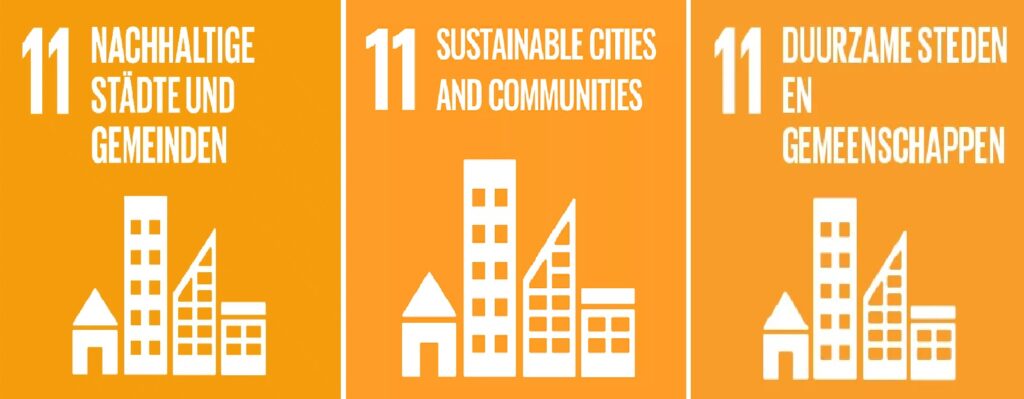Last week, I reflected on why writing surpassed podcasting. Today, the focus returns to the material world—the very substance of our cities. Bamboo, laterite, and other local resources demand a serious reconsideration of how we build. This is not nostalgia, nor a fetishisation of exotic timbers. It is a pragmatic response to carbon-intensive construction dominating West and Northwest Africa.
Concrete and steel have delivered monumental feats. Yet their environmental cost now requires urgent recalibration. Bamboo, fast-growing and resilient, offers a structural alternative. Laterite, abundant and thermally efficient, complements bamboo beautifully. Together, they form the backbone of a building code attuned to climate, culture, and craft.
We must look beyond a single material. Rammed earth, clay composites, stabilised mud blocks, and treated timber each have their place. Each material tells a story: its ecological footprint, its cultural lineage, its structural logic. Integrating these materials reduces dependence on imported, high-carbon products. It also reasserts local craftsmanship in the urban realm. Communities can reclaim agency over construction while maintaining architectural sophistication.
The design sensibility matters as much as the material. Streets must breathe, public spaces must invite interaction. Buildings must adapt to local winds, seasonal rains, and intense sunlight. Bamboo frames, when combined with laterite walls, produce cooling interiors without mechanical air conditioning. Green roofs and permeable courtyards enhance this effect. Architecture becomes climate-responsive, human-centric, and culturally resonant.
A bamboo-based code is not merely about construction. It is about the urban system. Street layouts, drainage, green corridors, and public spaces must harmonise with material properties. Bamboo does not exist in isolation. It thrives within integrated urban design, where density, mobility, and environmental strategy converge. The city becomes a workshop of ideas and materials, where resilience is engineered from the ground up.
Codes must be adaptive. Bamboo requires maintenance, protection from pests, and structural foresight. Laterite demands careful soil assessment, curing techniques, and weathering management. Stabilised mud and rammed earth need precise moisture control. Yet, once codified, these guidelines allow local governments, architects, and communities to build at scale with confidence. Carbon neutrality shifts from aspiration to tangible practice.
Cultural context is essential. Vernacular traditions in Hausa, Yoruba, Wolof, and Serer architecture already embed climate-adaptive systems. High ceilings, wide verandas, and perforated screens moderate heat naturally. Courtyard housing and shaded arcades create social cohesion as well as thermal comfort. Incorporating these lessons into a bamboo–laterite framework fuses ancestral wisdom with modern sustainability. This approach honours local identity while meeting global environmental imperatives.
The economic logic is compelling too. Bamboo grows quickly, regenerates naturally, and thrives on degraded soils. Laterite requires minimal processing. Labour-intensive techniques support local employment and skills transfer. Communities gain ownership of construction processes, reducing dependency on costly imports and complex machinery. Sustainable urbanism becomes socially as well as ecologically resilient.

Yet this argument cannot be fully appreciated without acknowledging petroleum’s legacy. For over a century, flows of oil and gas have left deep marks on African cities and landscapes: refineries and depots along coasts, sprawling road networks designed for private vehicles, cement industries powered by fossil energy, and headquarters whose architecture symbolised petroleum’s dominance. Petroleum wealth fuelled demographic expansion beyond traditional urban boundaries, distorted social relationships, and encouraged sprawling, carbon-intensive urban forms. It created cities dependent on asphalt, concrete, and steel—cheap in the short term, but costly for climate, ecology, and long-term resilience.
As the oil era wanes, uncertainty grows. Petroleum infrastructure—ports, depots, motorways—will face dismantling, reuse, or transformation. The shift to renewable and circular energy systems is not only technical. It will reshape the very form of our cities. This transition opens space for bamboo and laterite. These materials can become anchors of a post-petroleum urbanism. They embody local agency, reduce dependence on imports, and provide a framework for resilience. Cities can pivot away from oil-driven sprawl towards compact, climate-adapted neighbourhoods.
A bamboo-based building code is the precursor to larger urban interventions. It enables eco-infrastructure, green transport, and low-carbon neighbourhood planning. Next week, we will explore how these codes interact with mobility, public infrastructure, and energy-efficient streetscapes. Material innovation alone cannot shape a city. Architecture, mobility, and social life must converge. Grounding cities in bamboo and laterite cultivates resilience, environmental responsibility, and a profound sense of place.
The question is no longer whether bamboo and laterite can replace concrete. The real question is: How soon can we write the rules that make it inevitable?
Human-Centred Streets: The Proven Way to Reclaim African Urban Sociability
Every city tells a story through its streets. They reveal how people live, how they…
Biophilic Design: The Proven Way to Shape Sustainable African Communities
A city breathes when its architecture remembers nature. Too often, our modern buildings forget this….
Open-Source Urbanism: The Proven Way to Empower African City Builders
Urban design cannot succeed if knowledge remains locked behind bureaucracy. The tools of planning must…
The Just Transition: The Proven Way to Empower Local Builders and Communities
The question of equity in green building is not academic. It is moral, environmental, and…
Nature-Led Design: The Proven Way to Reclaim African Urban Spaces
Cities breathe best when nature is not a guest but a resident. Across West and…
Green Transport: The Proven Way to Power Africa’s Bamboo Cities
Transport shapes how we live, connect, and experience our cities. Yet, in much of West…